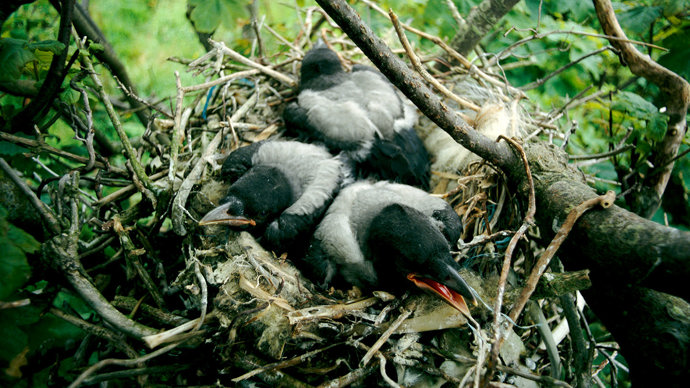Common names: hooded crow
Scientific name: Corvus cornix
Family: Corvidae (crows)
Habitat: towns, gardens, woodland, farmland
Diet: carrion, insects, grain, eggs
Predators: no known natural predators
Origin: native
A striking scavenger with a taste for carrion. The hooded crow was once considered to be the same species as the carrion crow, but is now recognised separately.
Common names: hooded crow
Scientific name: Corvus cornix
Family: Corvidae (crows)
Habitat: towns, gardens, woodland, farmland
Diet: carrion, insects, grain, eggs
Predators: no known natural predators
Origin: native
The hooded crow is a striking sight; grey in colour with a black head, wings and tail. It measures around 46cm in length and has a thick, curved beak, dark brown eyes and scaly feet.
Not to be confused with: the carrion crow, which is fully black in colour.
Hooded crows are omnivores, eating a diet made up of carrion, insects, grain and eggs. They will steal eggs from other birds’ nests and are also known to eat chicks on occasion. They can often be seen feeding together in groups.

Credit: John Cancasoli / naturepl.com
These birds build their large nests in tall trees, old buildings and cliff edges. They usually have one brood made up of 3-6 eggs, which hatch after around 18 days of incubation. Chicks are ready to fledge after a month.
Hooded crows can be found in woodland, farmland, towns and gardens in North and West Scotland, Northern Ireland and the Isle of Man. Winter migrants from Scandinavia are sometimes spotted in eastern England and eastern Scotland.
Hooded crows are more social than carrion crows; look out for groups of these birds foraging in fields for food.
Keep exploring